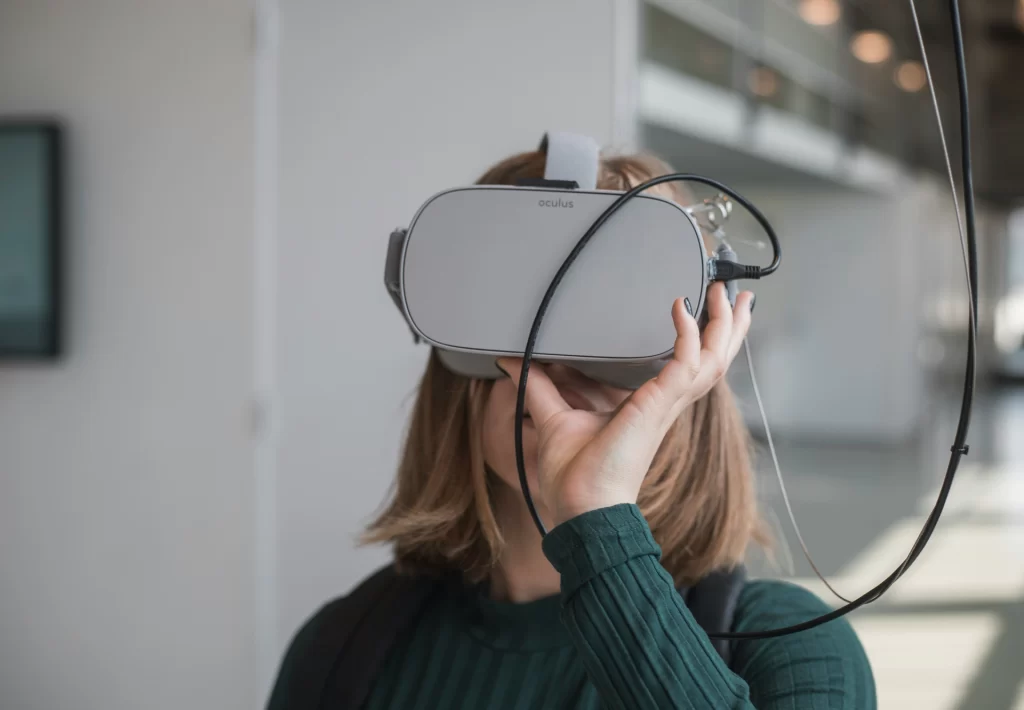What is a 3D data visualization tool? It’s software or an app that helps visualize the data, information, and processes in a more understandable and intuitive form. These tools are used to analyze data, to better understand information, and to make decisions based on the visualization. They are especially useful in science, business, marketing, education, life sciences, manufacturing, and other industries where it’s necessary to analyze complex and big data.
CanvasLogic
CanvasLogic has taken 3D visualization into new dimensions by offering an all-in-one platform for interactive product configuration, pricing, and quoting. It is an industrial-grade design aimed at markets like manufacturing, ecommerce, and life sciences, blending customization, interactivity, and precision.
Key features:
- Interactive 3D configurators: Clients can modify product features such as colors, textures, and materials in real time. Imagine you want to buy a kitchen. With CanvasLogic’s platform, it’s easy to choose the most suitable option based on price, colors, materials, equipment, etc. You can change all the details you want: even a doorknob or a ceiling lamp.
- Augmented reality (AR): Customers can place virtual products in their real-world environment using AR technology. With augmented reality, you can place a sofa you are about to order in your own room and see how much space it will take, whether the available color will work well with your other furniture, and even decide where better to place it.
- Guided selling tools: With guided selling, even users unfamiliar with technology can configure a product with ease thanks to interactive guidance and helpful prompts.
- Cloud-based integration: CanvasLogic platform works across all devices and integrates effortlessly with existing platforms, including CRMs and ecommerce solutions.
- Real-time pricing and instant quotes: You can easily generate customized quotes with a breakdown of costs, visuals, and technical specs in seconds.

Enscape
Enscape is a real-time rendering tool with customers in architecture and design that plugs into various CAD programs such as popular tools like Revit, SketchUp, Rhino, ArchiCAD, and Vectorworks to walk interested users through the whole approach of converting 3D models into dynamic walkthroughs.
Key features:
- Real-time rendering: Design changes are instantly visible, eliminating waiting times for rendering processes.
- Integration with virtual reality: It can be used rather effectively for VR headsets to allow clients and groups to “walk through” the designed structure before the foundation has ever been laid.
- Collaboration facilities: Create 360-degree panoramas or export standalone files for stakeholders to view the progress.
- Ease of use: Enscape is user-friendly, it requires minimal setup and offers a gentle learning curve, making it suitable for beginners and professionals alike.

V-Ray
Globally recognized rendering and photorealistic visualization name, widely used within architecture, film, and gaming due to the ways in which it portrays the most detailed and beyond-realistic scenes.
Main features:
- Advanced rendering engine: Utilizes advanced techniques like ray tracing, global illumination, and photon mapping to achieve realistic imagery.
- Comprehensive material library: Thousands of materials, from metals to fabrics would cover every step of making the scene complex.
- Cross compatibility: Works seamlessly with 3ds Max, SketchUp, Rhino, and Revit.
- Custom settings: Users can have complete control over lighting placement and texture mapping, ensuring full creative independence.
Blender
Blender is an open-source tool for 3D modeling, animation, and rendering. Very competitive with all those modeling programs today, even when the whole training cycle takes a good back-and-forth editing. Its professional use in industries such as game design, animation, and VFX is notable, alongside its strong community support and active development.
Key features:
- Free and open-source: Accessible to everyone, regardless of budget.
- Wide range of features: From creating basic 3D models to complex animated scenes, Blender handles it all.
- Active community: Thousands of tutorials, plugins, and community projects make learning and expanding easy.
- Real-time rendering: With its built-in Eevee engine, you can preview realistic lighting and textures in real time.
SketchUp
SketchUp’s simplicity and versatility make it a favorite for quick 3D modeling and visualization. Often used in architecture, interior design, and construction, it’s perfect for turning ideas into tangible models.
Features to love:
- User-friendly interface: Ideal for beginners and professionals alike, SketchUp allows users to create and edit models with ease.
- Extensive library: The 3D Warehouse offers thousands of pre-designed objects to incorporate into your projects.
- Integration options: Works seamlessly with rendering tools like V-Ray to enhance visual quality.
- Free and paid versions: The free version caters to casual users, while the Pro version offers advanced features for professionals.

Autodesk 3ds Max
A favorite among game developers, architects, and animators, Autodesk 3ds Max is known for its robust modeling and rendering tools.
Key benefits:
- Precision modeling: Perfect for creating intricate designs with parametric and polygonal modeling tools.
- Built-in animation tools: Bring scenes to life with advanced animation capabilities.
- Large plugin library: Extend functionality with third-party plugins for tasks like fluid simulations and particle effects.
- High-quality rendering: Compatible with rendering engines like Arnold and V-Ray for lifelike visuals.
Cinema 4D
Software solution for animating the most complex of visual effects and typographic methods. For this very reason, Cinema 4D is considered to be a useful tool, perhaps more suitable for beginners, but it also has many advanced features for professional designers.
Key benefits:
- Quick: Mograph tools – as their name implies – are great time savers in animating complex procedures or creating outstanding effects.
- Smart: Rendering results, including light, and texture, are absolutely fantastic.
- Compliant: It works nicely with Adobe tools, especially After Effects, for a harmonious structure of motion imagery.
- Frequent: Regular updates keep it current and compatible with cutting-edge design technology.
Rhino 3D
Rhino 3D, despite its limitations, is still appreciated for its precision modeling characteristics. It is primarily used to create unusually complex shapes as well as free-form designs, making it a preferred tool among architects and industrial designers.
Features are as follows:
- Parametric modeling: Can be integrated into using Grasshopper, which is excellent in creating intricate parametric models.
- Wide range of file support: It can import and export most formats – basically, it can be compatible with others if used with it.
- Precision measuring: Ideal in cases where a project involves precision or exactitude, making it especially useful in jewelry design and engineering.
Daz 3D
Daz 3D is intended for the creation of realistic characters and adeptly designed vignettes. It has a wide-ranging library of pre-built models and textures, lifelike animations, and lifelike rendering.
Why should I select Daz 3D?
- Its purpose-built character: Making the most detailed character modeling and animation work.
- Excellent asset management: Huge libraries of poses, clothing, and props.
- The power of imaging: Rendering lays stress on producing stunning visuals with the Nvidia Iray engine.
SolidWorks
SolidWorks is a versatile software tool that combines precision and functionality with cutting-edge features.
Key features:
- CAD integrations: This software combines 2D and 3D-associated design and is a comprehensive tool for creating detailed modules.
- Tools of simulation: People can test and refine their created designs well before creating them.
- Collaboration: The software makes sharing models and designs effortless, facilitating teamwork across all connected modules.
Result
3D Visualization Solutions revolutionize how industries understand, analyze, and present complex data by offering interactive, intuitive, and visually appealing tools. From architecture to ecommerce, these solutions cater to diverse needs, enabling real-time views, extensive customization, and seamless integration with other systems. Features such as augmented reality and guided selling enhance efficiency by combining precision with user engagement and satisfaction in the most effective way.
FAQ
What is 3D visualization?
3D visualization creates the three-dimensional representation of data, objects, or environments via software tools. It enables users to interact with the complexities of their designs, configurations, and scenarios by bundling data into visual appeal.
What are the types of 3D visualization tools?
The kinds of 3D visualization tools include the following:
Interactive configurators: This is the type that offers the chance of real-time customization (e.g., CanvasLogic).
Rendering engines: Focus on creating photorealistic visuals by simulating lighting, materials, and textures (e.g., V-Ray).
CAD-based tools: They are used to build very precise models (e.g., Rhino 3D).
Open-source software: It is usually the software that offers solutions as flexible and attractive as Blender.
Specialized platforms: Specialized platforms like Daz 3D focus on specific applications such as creating detailed objects, animals, and character designs, while platforms like CanvasLogic specialize in product placement using augmented reality (AR).
Why should you choose CanvasLogic?
CanvasLogic is an all-in-one solution for 3D visualization combined with the best CPQ platform able to integrate interactive configurators, AR experiences, and guided selling tools. It’s real-time product customization, dynamic pricing, and quoting suit manufacturing, ecommerce, and life sciences industries.



